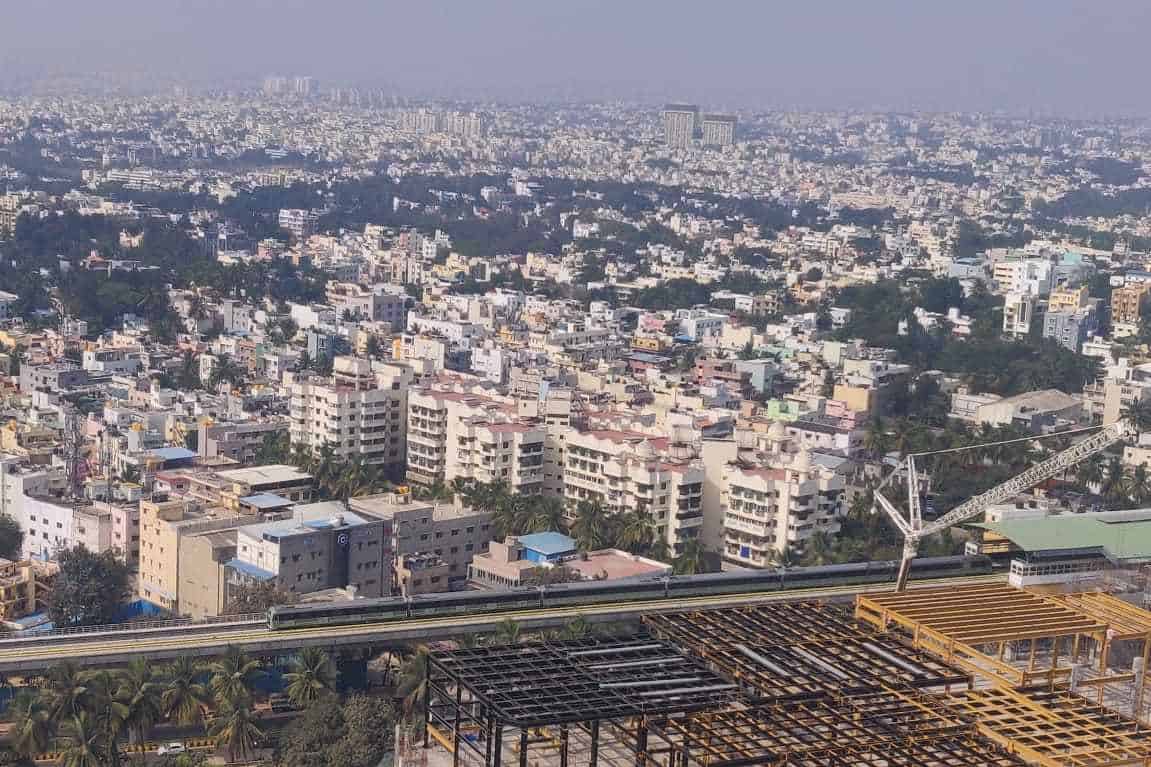Bangalore Rural Lok Sabha constituency was formed in 2008 and went to polls for the first time in 2009. Most parts of the constituency were part of the erstwhile Kanakapura Lok Sabha constituency which comprised of assembly segments – Kanakapura, Ramanagaram, Channapatna, Magadi, Sathanur, Uttarahalli, Malavalli and Anekal, drawing from three districts – Ramanagaram, Bengaluru Urban and Mandya.
Since 2008, Sathanur assembly constituency was merged with Kanakapura, Channapatna and Ramangaram. Uttarahalli was distributed between Bangalore South and Rajarajeshwarinagar, and Kunigal was added from Tumkur district. It thus comprises of Kanakapura, Channapatna, Ramanagaram, Magadi, Kunigal, Anekal, Bangalore South and Rajarajeshwarinagar assembly segments.

In this analysis, we look at the divide between the parts of the constituency that fall inside Bengaluru Urban district and those that are outside. The goal is to look at the numbers and understand the challenges they present to contesting candidates and how political parties have tried to manage the implications.
For the purpose of this analysis we break the constituency into two parts – “Bengaluru” and “Outside Bengaluru”. “Bengaluru” comprises the assembly segments Rajarajeshwarinagar, Anekal and Bangalore South, basically those that lie inside the district. The “Outside Bengaluru” segments would be the rest – Kunigal, Magadi, Channapatna, Ramanagaram and Kanakapura. In many ways, these two parts represent the urban and rural parts of a very mixed constituency.
Area vs Voters
The total area of the constituency is 5022 sq. km. However, only 663 sq. km, or 13.2% of the constituency, lies inside Bengaluru, with 4359 sq. km, or the rest 86.8%, falling in the Outside Bengaluru part. This seems to suggest that the constituency is very “rural”.

However, the number of registered voters (electors) presents a different story. 60% of the registered electors live within the boundaries of Bengaluru with 40% falling outside, which flips the balance towards Bengaluru, making it a more “urban” constituency.

Political Scenario
The different segments, and their rural-urban nature has meant that the voters vote differently. The Indian National Congress (INC) and the Bharatiya Janata Party (BJP) predominate within Bengaluru, while outside the city it is a three-way battle with the Janata Dal Secular (JDS) being a strong player.
The vote-split in the Bengaluru constituencies during the 2023 assembly elections favoured the BJP over the INC, if only slightly. While the BJP had a close win in Rajarajeshwarinagar, it was a comfortable splitting of Bangalore South and Anekal between the two parties.
| Assembly Constituency | Winning Party | Vote-share | Runner-up | Vote-share |
| Rajarajeshwarinagar | BJP | 48.72% | INC | 44.21% |
| Bangalore South | BJP | 59.35% | INC | 38.35% |
| Anekal | INC | 53.55% | BJP | 41.11% |
However, in the segments outside Bengaluru, the Janata Dal Secular (JDS) was a major player, being the runner up in three and winning Channapatna where the former CM H.D. Kumaraswamy contested.
| Assembly Constituency | Winning Party | Vote-share | Runner-up | Vote-share |
| Kunigal | INC | 42.88% | BJP | 27.63% |
| Magadi | INC | 46.74% | JDS | 40.89% |
| Ramanagaram | INC | 47.98% | JDS | 42.12% |
| Channapatna | JDS | 48.83% | BJP | 40.79% |
| Kanakapura | INC | 74.58% | JDS | 11.08% |
Given the much larger number of voters in Bengaluru district, this seems to suggest a direct slug-fest between the BJP and INC. However, the number of people who turn up to vote makes a difference – a significant one in this case.
Voting in 2024
The voter turnout in Bengaluru tends to be on the lower side in all elections. Reams have been written on urban voter apathy, and also about poor maintenance of voter rolls. While the segments in Bengaluru saw very tepid polling, the numbers outside were contrastingly very high.

Boosted by Anekal, the turnout in Bengaluru was 57.24%, while on the other side, outside Bengaluru, a whopping 84.86% of the voters showed up to vote.

What this meant is that the total number of votes across the rural-urban divide evened out with Bengaluru having only a minuscule 9000 vote advantage over the areas outside out of a total 19 lakh votes. So while in terms of area size and electors the balance see-saws between the rural and urban parts of Bangalore Rural, in the final count, it ends up in a perfect 50-50 balance between the two.

How this scenario and vote-split plays out politically in terms of results is not the scope of this analysis. The INC incumbent D.K. Suresh has held the seat since 2013 (bye-election), when he contested first. Each time he’s won comfortably with a margin of more than 10 percentage points. He incidentally was the sole winner for the INC in Karnataka in 2019, winning by a larger margin than in 2014, while his party drew a blank in the rest of the state.
In 2024, with the BJP and the JDS stitching an alliance, former PM Deve Gowda’s son-in-law Dr. C.N. Manjunath was asked to contest, but on a BJP ticket. This was done apparently to tick both party boxes and woo both BJP and JDS voters. How this ploy will play out and whether it’ll help them unseat a strong incumbent needs to be seen.

